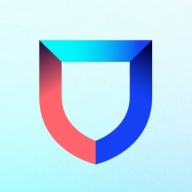


Lacework FortiCNAPP and Amazon EKS are leading solutions in cloud security and orchestration, respectively. Amazon EKS edges ahead with its robust orchestration capabilities and scalability through AWS integration.
Features: Lacework FortiCNAPP offers ease of use, machine learning detection, and insightful alerts. It prioritizes alerts based on severity, ensuring a strong security posture with continuous monitoring and compliance support across multiple standards. Amazon EKS excels in microservices deployment, auto-scaling, and AWS integration, enhancing scalability and observability. It supports hybrid deployments, offering a seamless Kubernetes experience.
Room for Improvement: Lacework FortiCNAPP needs better visibility in compliance metrics and IAM security controls. Enhancements in integration with third-party SIEMs and container security are also called for. Slow AWS instance scanning and lack of remediation features add to the concerns. Amazon EKS could improve stability and provide a more intuitive console and better documentation, along with addressing high costs for medium-sized customers.
Ease of Deployment and Customer Service: Lacework FortiCNAPP is praised for its interactive support team and proactive engagement, though resolution times may vary. Amazon EKS receives mixed feedback, with support limited beyond initial setups. Both offer extensive deployment options, with Amazon EKS providing more accessible integration with on-premises resources.
Pricing and ROI: Lacework FortiCNAPP is seen as expensive but offers significant ROI through automation and efficiency. Its pricing has stabilized concerns over time. Amazon EKS uses a pay-as-you-go model, potentially costly based on usage. Its pricing reflects comprehensive service offerings, balancing cost against long-term scalability and flexibility.
The detailed information PingSafe gives about how to fix vulnerabilities reduces the time spent on remediation by about 70 to 80 percent.
After implementing SentinelOne, it takes about five to seven minutes.
Our ability to get in and review our vulnerability stance, whether daily, monthly, weekly, or whatever it might be, has drastically improved over our prior provider.
When we send an email, they respond quickly and proactively provide solutions.
They took direct responsibility for the system and could solve queries quickly.
Having a reliable team ready and willing to assist with any issues is essential.
We have a paid subscription that provides priority support.
Amazon's technical support is quite good, especially for those who purchase support services.
Having to know what questions to ask is essential.
As soon as we need to add somebody, we just add them to NinjaOne, and then we have a script set up where it automatically deploys and adds them to whichever group we need.
I would rate it a 10 out of 10 for scalability.
Scalability is no longer a concern because Cloud Native Security is a fully cloud-based resource.
The ability to scale based on requirements by deploying additional containers is a strong point for Kubernetes.
It can scale very well according to needs, and it doesn't have any issues with scalability.
I would rate the scalability of Amazon EKS an eight out of ten, suggesting it has high scalability.
In my experience, there has been 100 percent uptime.
SentinelOne Singularity Cloud is incredibly reliable.
The cloud console is very resilient.
If I had to ask for anything to make it easier, it would be signed images that are GPG signed and a public repository where we can get the bits from.
If they can merge Kubernetes Security with other modules related to Kubernetes, that would help us to get more modules in the current subscription.
As organizations move to the cloud, a cloud posture management tool that offers complete cloud visibility becomes crucial for maintaining compliance.
Simplifying these will enable more people, not just those with strong foundational knowledge, to work effectively with these services.
A UI could help generate config files, simplifying the process for developers who are not architects.
Currently, some third-party plugins, like certain network plugins such as CNI, Calico CNI, or Cilium, are not fully supported.
With very little negotiation involved, we just let them know what we could pay and they were willing to meet us at slightly above what we paid with Sophos, which was still very fair for what we were looking at.
The price was very, very important to us, and it came down to the price when we were doing our evaluations WatchGuard and SentinelOne.
Covering our 50,000 endpoints would have nearly bankrupted most security programs, even well-funded ones like ours.
The pricing structure is beneficial for large companies who pay for what they use, but it is not affordable for startups.
The real-time detection and response capabilities of SentinelOne Singularity Cloud impressive because it is a platform that uses artificial intelligence to determine what is normal and what is abnormal and can lock down any virus it may encounter.
We were shown how ransomware can be immediately stopped in real-time. That was huge.
Our previous product took a lot of man hours to manage. Once we got Singularity Cloud Workload Security, it freed up our time to work on other tasks.
The most beneficial aspect of Amazon EKS is that it helps manage the Kubernetes master node, so I don't need to maintain the master node, including tasks like upgrading.
The scalability is excellent, allowing us to efficiently handle customer experiences and improve operational efficiency.
Now, with the serverless option, you can deploy everything and AWS handles the infrastructure.



SentinelOne Singularity Cloud Security protects cloud workloads, offering advanced threat detection and automated response. It integrates seamlessly with cloud environments and secures containerized applications and virtual machines against vulnerabilities.
SentinelOne Singularity Cloud Security is renowned for its efficiency in mitigating threats in real-time. The platform integrates effortlessly with existing cloud environments, ensuring robust cloud security management with minimal manual intervention. Securing containerized applications and virtual machines, it excels in threat intelligence and endpoint protection. However, improvements are needed in performance during high workload periods, and more integrations with third-party tools and better documentation would be beneficial. Users often find the installation process complex, support response times slow, and the dashboard's navigation unintuitive.
What are the key features of SentinelOne Singularity Cloud Security?In specific industries, SentinelOne Singularity Cloud Security is implemented to safeguard critical data and infrastructure. Organizations in finance, healthcare, and technology depend on its real-time threat detection and automated response to protect sensitive information. Its ability to secure containerized applications and virtual machines is particularly valuable in dynamic environments where rapid scaling is necessary.
Amazon Elastic Kubernetes Service (Amazon EKS) is a fully managed Kubernetes service. Customers such as Intel, Snap, Intuit, GoDaddy, and Autodesk trust EKS to run their most sensitive and mission critical applications because of its security, reliability, and scalability.
EKS is the best place to run Kubernetes for several reasons. First, you can choose to run your EKS clusters using AWS Fargate, which is serverless compute for containers. Fargate removes the need to provision and manage servers, lets you specify and pay for resources per application, and improves security through application isolation by design. Second, EKS is deeply integrated with services such as Amazon CloudWatch, Auto Scaling Groups, AWS Identity and Access Management (IAM), and Amazon Virtual Private Cloud (VPC), providing you a seamless experience to monitor, scale, and load-balance your applications. Third, EKS integrates with AWS App Mesh and provides a Kubernetes native experience to consume service mesh features and bring rich observability, traffic controls and security features to applications. Additionally, EKS provides a scalable and highly-available control plane that runs across multiple availability zones to eliminate a single point of failure.
EKS runs upstream Kubernetes and is certified Kubernetes conformant so you can leverage all benefits of open source tooling from the community. You can also easily migrate any standard Kubernetes application to EKS without needing to refactor your code.
Lacework FortiCNAPP provides robust cloud security, combining vulnerability management and multi-cloud insight with user-friendly controls, machine learning detection, and compliance support.
Lacework FortiCNAPP specializes in cloud security by merging machine learning anomaly detection with agent-based vulnerability management to offer detailed alerts and compliance reports. Its comprehensive approach allows continuous monitoring across AWS and Kubernetes, providing insights from an attacker's perspective. The platform offers automation and seamless Slack integration, facilitating collaborative and efficient cloud security management. Users value its ability to handle multi-cloud environments and scan IAC scripts, configurations, and compute nodes across AWS and GCP.
What are the key features?Organizations across sectors leverage Lacework FortiCNAPP for cloud security, focusing on compliance, security posture, and vulnerability management. It is widely used for monitoring AWS and Kubernetes environments, scanning IAC scripts, configurations, and securing compute nodes. It supports multi-cloud security posture management and log ingestion, enabling companies to maintain strong cloud infrastructures without dedicated security layers.
We monitor all Container Security reviews to prevent fraudulent reviews and keep review quality high. We do not post reviews by company employees or direct competitors. We validate each review for authenticity via cross-reference with LinkedIn, and personal follow-up with the reviewer when necessary.